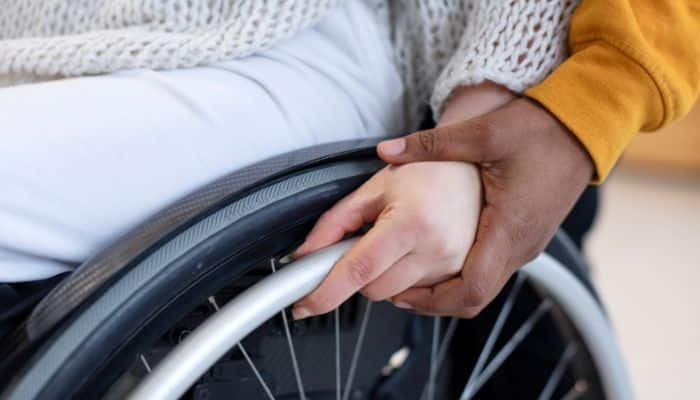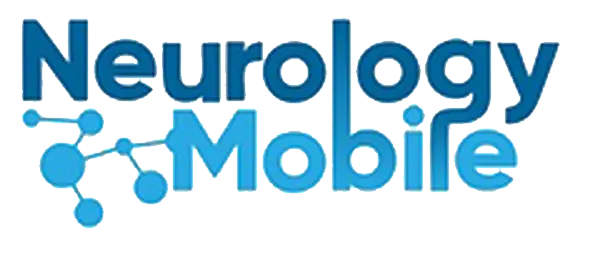4 min read
Understanding ALS: Early Warning Signs and Diagnostic Clues
ALS, or amyotrophic lateral sclerosis, is a debilitating neurodegenerative disease that affects the nerve cells in the brain and spinal cord. As the disease progresses, it leads to the gradual loss of muscle control, impacting a person’s ability to walk, talk, eat, and breathe. With no known cure, early detection and understanding the warning signs become crucial for managing the condition effectively. In this article, we will explore the early warning signs of ALS and the diagnostic clues that healthcare professionals look for when identifying the disease.
Recognizing the signs of ALS in its early stages can be challenging, as the initial symptoms often mimic those of other conditions. However, key indicators may include muscle weakness, twitching, cramps, and difficulty speaking or swallowing. The diagnostic process typically involves a thorough medical history review, physical examination, and a series of tests to rule out other potential causes. Understanding these early warning signs and the diagnostic approach can empower individuals to seek medical attention promptly, potentially improving their quality of life and access to care. Let’s delve into the details and arm ourselves with knowledge to better understand ALS.

- What is ALS?
- Early warning signs of ALS
- Common symptoms of ALS
- Diagnostic process for ALS
- Medical tests and procedures for ALS diagnosis
- ALS misdiagnosis and challenges in diagnosis
- Treatment options for ALS
- Supportive care for ALS patients
- Research and advancements in ALS treatment
- Conclusion: Living with ALS and finding support
What is ALS?
ALS, or amyotrophic lateral sclerosis, is a devastating neurodegenerative disease that affects the nerve cells in the brain and spinal cord. It gradually leads to the loss of muscle control, making it challenging for individuals to perform everyday tasks such as walking, talking, eating, and even breathing. As there is currently no known cure for ALS, early detection and understanding the warning signs become crucial for managing the condition effectively. In this article, we will explore the early warning signs of ALS and the diagnostic clues that healthcare professionals look for when identifying the disease.
Early warning signs of ALS
Amyotrophic lateral sclerosis (ALS), also known as Lou Gehrig’s disease, is a progressive neurological disorder that affects the motor neurons responsible for controlling voluntary muscle movements. These motor neurons degenerate and eventually die, leading to muscle weakness, atrophy, and loss of function. ALS can affect anyone regardless of age, gender, or ethnicity, although it is more commonly diagnosed in individuals between the ages of 40 and 70.
Common symptoms of ALS
Recognizing the signs of ALS in its early stages can be challenging, as the initial symptoms often mimic those of other conditions. However, there are several key indicators that may suggest the presence of ALS. One of the earliest warning signs is muscle weakness, which usually starts in the limbs and gradually spreads to other parts of the body. Individuals may experience difficulty with tasks that were once effortless, such as lifting objects or climbing stairs.
Another common early symptom of ALS is muscle twitching, also known as fasciculations. These involuntary contractions of the muscles can occur randomly and are often the result of the motor neurons misfiring. Cramps and muscle stiffness are also frequently reported by individuals with ALS, particularly in the hands and legs.
In addition to muscle weakness and twitching, difficulty speaking or swallowing may also be early warning signs of ALS. Speech changes can manifest as slurred or nasal speech, while swallowing difficulties may lead to choking or coughing during meals. It is important to note that these symptoms can also be caused by other conditions, which is why a comprehensive diagnostic process is necessary for accurate ALS identification.
Diagnostic process for ALS
Diagnosing ALS requires a thorough evaluation by a healthcare professional, typically a neurologist with expertise in neuromuscular disorders. The process begins with a detailed medical history review, where the doctor will inquire about the onset and progression of symptoms, as well as any family history of ALS or related conditions. The healthcare provider will also conduct a physical examination to assess muscle strength, reflexes, and coordination.
To rule out other potential causes of the symptoms, the diagnostic process often involves a series of tests. Blood tests can help identify certain genetic mutations associated with ALS, while imaging studies such as magnetic resonance imaging (MRI) or computed tomography (CT) scans can rule out other structural abnormalities. Electromyography (EMG) and nerve conduction studies are commonly performed to assess the electrical activity of the muscles and nerves, providing valuable insights into the integrity of the motor neurons.

Medical tests and procedures for ALS diagnosis
EMG and nerve conduction studies are among the most important tests used to diagnose ALS. During an EMG, a small needle electrode is inserted into the muscle to record its electrical activity. Abnormal spontaneous activity, such as fasciculations or fibrillations, may indicate motor neuron degeneration. Nerve conduction studies involve the placement of electrodes on the skin to measure the speed and strength of electrical signals traveling through the nerves.
In some cases, a lumbar puncture, also known as a spinal tap, may be performed to analyze the cerebrospinal fluid for any abnormalities. This procedure involves inserting a needle into the lower back to collect a small sample of the fluid surrounding the spinal cord and brain. The cerebrospinal fluid can provide important clues about the presence of inflammation or other conditions that may affect the nervous system.
Genetic testing may also be considered in certain cases, especially if there is a family history of ALS or if there is suspicion of a specific genetic mutation associated with the disease. However, it is important to note that not all cases of ALS have a known genetic cause, and genetic testing may not be necessary for everyone.
ALS misdiagnosis and challenges in diagnosis
Due to the complexity of ALS and the similarity of its early symptoms to those of other conditions, misdiagnosis can occur. Some individuals may initially be misdiagnosed with other motor neuron diseases, such as progressive muscular atrophy or primary lateral sclerosis. Others may be mistakenly diagnosed with conditions that cause muscle weakness, such as myasthenia gravis or peripheral neuropathy.
The challenges in diagnosing ALS highlight the importance of seeking medical attention from a healthcare professional with expertise in neuromuscular disorders. A thorough evaluation, including a comprehensive medical history review and the appropriate diagnostic tests, can help differentiate ALS from other conditions and lead to an accurate diagnosis.
Treatment options for ALS
While there is currently no cure for ALS, there are treatment options available to manage the symptoms and improve the quality of life for individuals with the disease. Medications such as riluzole and edaravone have been approved by regulatory authorities for the treatment of ALS, as they have shown to slow the progression of the disease and extend survival. These medications work by reducing the levels of glutamate, a neurotransmitter that can cause excitotoxicity and damage the motor neurons.
In addition to medications, individuals with ALS may benefit from a multidisciplinary approach to care. Physical therapy and occupational therapy can help maintain muscle strength and function, while speech therapy can improve communication abilities. Assistive devices such as wheelchairs, communication aids, and breathing support may be recommended as the disease progresses.

Supportive care for ALS patients
Living with ALS can be emotionally and physically challenging, not only for the individuals diagnosed but also for their caregivers and loved ones. Palliative care and hospice care services can provide comprehensive support to individuals with ALS, focusing on managing symptoms, improving quality of life, and providing emotional and spiritual support.
Support groups and counseling services can also be invaluable resources for individuals with ALS and their families. These platforms offer a space for sharing experiences, offering advice, and connecting with others who understand the unique challenges of living with the disease.
Research and advancements in ALS treatment
Despite the absence of a cure, researchers and scientists are actively working to better understand ALS and develop new treatment options. Ongoing studies are investigating various approaches, including stem cell therapy, gene therapy, and the use of novel medications. Advances in technology and genetics are providing new insights into the underlying mechanisms of the disease, offering hope for improved diagnosis and targeted therapies in the future.
Collaboration between researchers, healthcare professionals, and individuals with ALS is crucial for advancing knowledge and finding effective treatments. Clinical trials offer opportunities for individuals with ALS to participate in research studies, potentially contributing to the development of new therapies and interventions.
Conclusion: Living with ALS and finding support
ALS is a challenging disease that affects not only the individuals diagnosed but also their loved ones. Early detection and understanding the warning signs are essential for managing the condition effectively. By recognizing the early symptoms of ALS and seeking medical attention promptly, individuals can access appropriate care and support, potentially improving their quality of life.
Living with ALS requires a multidisciplinary approach to care, involving healthcare professionals, caregivers, and support networks. The advancements in research and treatment options offer hope and the possibility of improved outcomes for individuals with ALS in the future. By raising awareness, supporting research efforts, and providing compassionate care, we can continue to make a difference in the lives of those affected by this devastating disease.
—
Note: The content in this article is for informational purposes only and should not be considered as medical advice. It is essential to consult with a healthcare professional for proper diagnosis and treatment of ALS or any other health condition.
